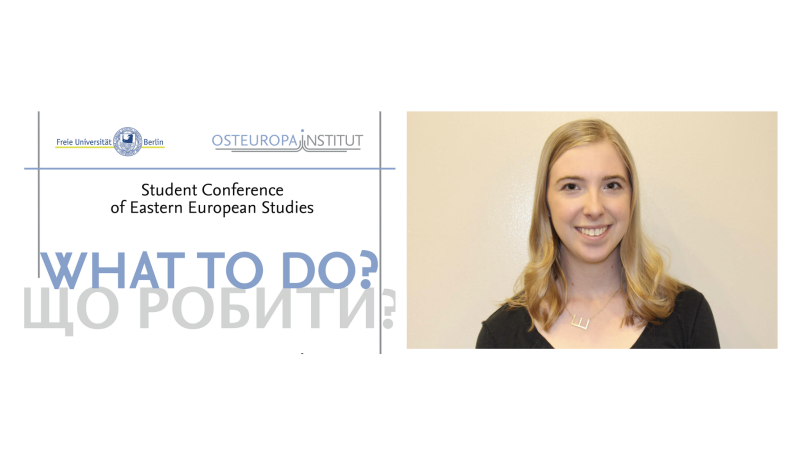
Menu
- Undergraduate
- Foreign Study
- Resources & Opportunities
- Alumni
- News & Events
- People
Back to Top Nav
Back to Top Nav
Back to Top Nav
Back to Top Nav
Back to Top Nav
Emily Hester'23, (double major in Russian Area Studies and Government) was selected to participate in the international student conference of the Institute for Eastern European Studies at the Freie Universität Berlin from 7th-9th of October 2022. The conference aims to facilitate an exchange between students from different disciplines and broaden the current view on Eastern Europe by the perspectives of young academics.
The conference aims to facilitate an exchange between students from different disciplines and broaden the current view on Eastern Europe by the perspectives of young academics. More information about the conference is available here:
https://www.oei.fu-berlin.de/en/institut/ankuendigungen/2022_05_25_conference.html
Cold War Public Diplomacy: The Analysis of U.S. and U.S.S.R. Government-Sponsored Information Persuasion Campaigns
The U.S. Information Agency (U.S.I.A.) was founded in the early 1950s to combat Soviet propaganda during the Cold War. Through magazines, such as Amerika, public exhibitions, and newsreels, the U.S.I.A. influenced foreign public opinion on matters ranging from the benefits of U.S. nuclear energy research to the ideals of consumer capitalist culture. At the same time, the Soviet Union disseminated combatting international information campaigns with magazines, such as Soviet Life, and other forms of state propaganda. Under a reciprocal agreement, from the 1950s to 1991, the U.S. and the Soviet Union began a mutual sharing campaign in which each country could distribute a certain number of copies per issue of Amerika and Soviet Life in the other's country. Through this soft power campaigning, both the U.S. and the Soviet Union implemented rhetoric supporting their respective agendas, as well as dismantled the other sides' negative arguments about them. Overall, the U.S.I.A.'s international information campaign was more successful in influencing public opinion in the Soviet Union than the Soviet Union's efforts in the U.S. My research employs public opinion polls, budgeting information, and the close analysis of sources such as Amerika and Soviet Life to argue that three factors-- funding, visual aesthetics, and rhetorical framing—were the main attributes of the U.S.'s relatively higher rate of success. As much Cold War research focus more on the hard power side of U.S.-Soviet Union competition and escalation, this piece offers an alternative lens of analysis with valuable insights about the general public's experience of Cold War competition.